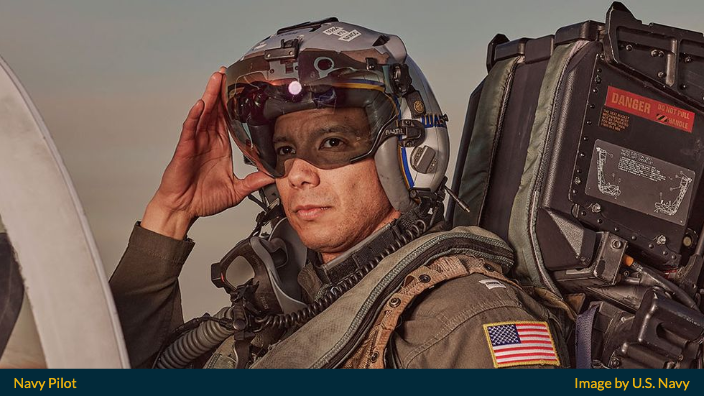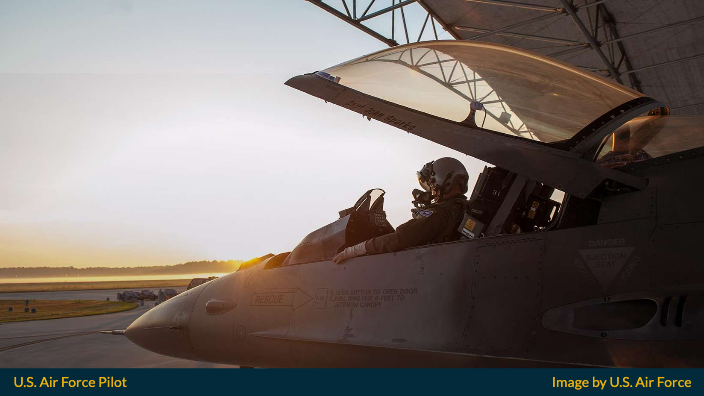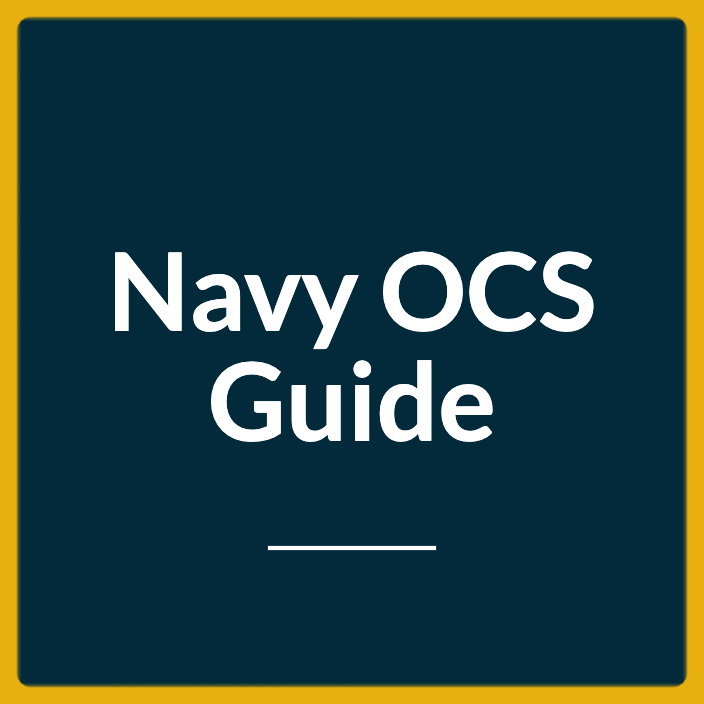Last Updated on August 30, 2023
Welcome to a thrilling exploration of the skies! In the realm of aviation, few professions embody valor and precision quite like Navy pilots and Air Force pilots.
While both take to the skies with unwavering determination, they possess unique qualities that set them apart.
Join us as we soar through the key differences between these two extraordinary groups, known for their unwavering commitment to protect and uphold our nation’s security.
From the distinctive training programs that shape their skills to the diverse range of aircraft they operate, we will unveil the fascinating contrasts that make Navy and Air Force pilots soar with their own distinct wings of valor.
Buckle up, as we embark on an exhilarating journey through the skies to discover what truly sets these brave pilots apart and gain a newfound appreciation for their unwavering dedication to keeping us safe from above.
Training and Education Requirements for Navy Pilots
Navy pilots are the epitome of excellence in the skies, and their rigorous training and education requirements reflect this.
To become a U.S. Navy pilot, candidates must first complete a bachelor’s degree in a relevant field, such as aviation, engineering, or mathematics.

This educational foundation provides them with the knowledge and skills to excel in their future aviation career.
Following the completion of their degree, aspiring Navy pilots must then undergo a comprehensive training program at the Naval Aviation Schools Command (NASC) in Pensacola, Florida.
This program, known as Aviation Preflight Indoctrination (API), serves as a crucial stepping stone towards becoming a Navy pilot.
During API, candidates receive instruction in aerodynamics, navigation, and aviation physiology, among other essential subjects.
This intensive training ensures that future Navy pilots are well-equipped to handle the challenges they will face in the air.
Upon successful completion of API, candidates move on to Primary Flight Training (PFT), where they learn to fly using the T-6 Texan II aircraft.
This phase of training focuses on developing basic flying skills, including takeoffs, landings, and aerobatics. PFT serves as the foundation for the more advanced training that follows.
After PFT, candidates progress to Advanced Flight Training, where they are assigned to specific naval aircraft platforms based on their performance and the needs of the U.S. Navy.
This phase of the training pipeline is conducted at various Naval Air Stations across the country and involves intense instruction in advanced flight maneuvers, tactical operations, and mission-specific training. Each Naval Air Station has its own aviation training specialty.
Navy pilots are trained to operate a wide range of specialized or multi-mission aircraft, including fighter jets, helicopters, and maritime patrol aircraft, among others.
The extensive training and education requirements for Navy pilots ensure they possess the skills, knowledge, and resilience necessary to excel in the dynamic and demanding world of naval aviation.
Their commitment to constant improvement and a relentless pursuit of excellence sets them apart as true aviators of valor.
Training and Education Requirements for Air Force Pilots
Just like their Navy counterparts, Air Force pilots undergo a rigorous training and education process that prepares them for the challenges of flying high-performance aircraft.
The path to becoming a U.S. Air Force pilot begins with obtaining a bachelor’s degree in a relevant field, such as aviation, aerospace engineering, or physics.

This educational background provides aspiring pilots with a solid foundation in the principles of flight and the technical aspects of aviation.
Once the educational requirements are met, candidates for Air Force pilot training must pass the Air Force Officer Qualifying Test (AFOQT) and the Pilot Candidate Selection Method (PCSM) test.
These assessments evaluate candidates’ aptitude for pilot training and their potential to succeed in the high-pressure environment of military aviation.
If selected, candidates move on to the rigorous and highly competitive Specialized Undergraduate Pilot Training (SUPT) program.
This comprehensive program is conducted at one of several Air Force bases across the country and comprises both classroom instruction and flight training.
During SUPT, aspiring Air Force pilots learn the fundamentals of flight, navigation, and aircraft systems. They also receive advanced training in aerobatics, formation flying, and tactical operations.
Upon successful completion of SUPT, pilots are assigned to a specific aircraft platform based on their performance and the needs of the Air Force.
The Air Force operates a wide variety of aircraft, including fighter jets, bombers, cargo planes, and remotely piloted aircraft (drones). Each aircraft type requires specialized training to ensure pilots are proficient in its operation and mission.
The training and education requirements for Air Force pilots produce highly skilled aviators capable of executing a wide range of missions.
Their ability to adapt to changing situations, make split-second decisions, and work as part of a cohesive team makes Air Force pilots a force to be reckoned with in the skies.
Differences in Aircraft and Missions
One of the key differences between Navy pilots and Air Force pilots lies in the aircraft they operate and the missions they undertake.
Navy pilots primarily fly from aircraft carriers and handle a wide range of missions, including air superiority, strike warfare, reconnaissance, and anti-submarine warfare.
Their aircraft, such as the F/A-18 Super Hornet and the E-2 Hawkeye, operate in the demanding environment of carrier-based operations.
The Navy and Marine Corps aircrafts are specifically designed for aircraft carrier operations, which entails unique design requirements, such as a shorter aircraft wing span.
On the other hand, Air Force pilots operate from land-based airfields and handle missions such as air superiority, close air support, interdiction, and strategic bombing.
Their aircraft, such as the F-16 Fighting Falcon and the B-2 Spirit bomber, are optimized for high-speed operations, long-range missions, and air-to-ground combat.
The differences in aircraft and missions result in varying operational requirements and capabilities for Navy and Air Force pilots.
Navy pilots must possess exceptional carrier landing skills, as well as the ability to operate in a maritime environment. They must also be proficient in aerial refueling, as their aircraft often needs to cover long distances over water.
Air Force pilots, on the other hand, focus on land-based operations and must be skilled in air-to-ground combat and precision strikes.
They often operate in hostile environments and may be required to fly long-range missions to reach their targets.
The aircraft they operate carry a wide range of weapons and deliver devastating firepower when called upon.
While both Navy and Air Force pilots share a commitment to excellence and a dedication to protecting our nation, their differing aircraft and missions shape their unique skill sets and operational capabilities.
Career Paths and Opportunities for Navy Pilots
A career as a U.S. Navy pilot offers a multitude of exciting and fulfilling opportunities. Upon completing their initial training, Navy pilots are assigned to squadrons where they gain operational experience and continue to refine their skills.
These squadrons are typically based on aircraft carriers, naval air stations, or maritime patrol bases, depending on the type of aircraft they operate.
Navy pilots can advance in rank and responsibility throughout their career. They can progress from being a wingman to becoming a flight leader, squadron commander, and eventually, even an aircraft carrier air wing commander.
These leadership roles come with increased responsibilities and the opportunity to shape the future of naval aviation.
Besides operational flying, Navy pilots can also pursue various career paths within the U.S. Navy. They can become instructors at the Naval Aviation Schools Command, where they pass on their knowledge and experience to the next generation of naval aviators.
They can also serve in staff positions at various naval commands, contributing to the development of naval aviation strategy and policy.
Furthermore, Navy pilots can specialize in specific roles, such as test pilots or flight instructors. Test pilots play a crucial role in the development of new aircraft and systems, ensuring they meet the rigorous standards of naval aviation.
Flight instructors, on the other hand, help train and mentor aspiring Navy pilots, passing on their expertise and ensuring the next generation of aviators is prepared for the challenges ahead.
The career paths and opportunities for Navy pilots are diverse and rewarding, offering a chance to excel in operational flying, leadership positions, and specialized roles that contribute to the advancement of naval aviation.
Career Paths and Opportunities for Air Force Pilots
Just like their Navy counterparts, Air Force pilots have a wide range of career paths and opportunities available to them.
After completing their initial training, Air Force pilots are assigned to operational squadrons where they gain valuable flying experience and continue to develop their skills.
These assignments can be held in various locations within the United States or even overseas, depending on the needs of the U.S. Air Force.
As Air Force pilots progress in their careers, they can advance in rank and take on increased responsibilities.
They can become flight commanders, squadron commanders, and even wing commanders, leading teams of pilots and shaping the future of Air Force aviation.
Besides operational flying, Air Force pilots can also pursue specialized career paths within the Air Force. They can become test pilots, where they play a vital role in evaluating and validating new aircraft and systems.
Test pilots ensure the safety and performance of new aircraft, pushing the boundaries of aviation technology.
Air Force pilots can also become instructors, passing on their knowledge and experience to the next generation of pilots.
They can serve as flight instructors, teaching new pilots the fundamentals of flight and helping them develop the skills necessary for operational flying.
They can also become academic instructors, teaching at the Air Force Academy or other educational institutions within the Air Force.
Furthermore, Air Force pilots can pursue careers in various staff positions, contributing to the development of Air Force aviation strategy and policy.
They can work in areas such as flight safety, operations planning, or aviation research and development.
The career paths and opportunities for Air Force pilots are vast and varied, offering a chance to excel in operational flying, leadership positions, specialized roles, and contributing to the advancement of Air Force aviation.
Lifestyle and Deployment Differences
The life of a Navy pilot and an Air Force pilot is marked by unique lifestyle and deployment differences. Navy pilots are often assigned to aircraft carriers, which serve as floating air bases.
This means that Navy pilots can be deployed for extended periods, living and operating near their aircraft and fellow aviators.
The carrier environment presents its own challenges, such as the need for precise carrier landings and the ability to operate in a confined space.
Air Force pilots, on the other hand, are typically based at land-based airfields. While they may be deployed to various locations around the world, their deployments are of shorter duration compared to Navy pilots.
Air Force pilots can return to their home base between deployments, providing them with more stability and opportunities for family life.
Navy pilots often experience a higher frequency of deployments compared to Air Force pilots.
The nature of naval operations, including carrier deployments and the need to maintain a presence in strategic locations, often requires Navy pilots to spend more time away from home.
This can affect their personal lives and requires a high level of adaptability and resilience.
Air Force pilots, while still subject to deployments, may have more predictable schedules and opportunities for a better work-life balance.
This can be beneficial for those with families or other personal commitments.
The lifestyle and deployment differences between Navy pilots and Air Force pilots reflect the unique operational requirements and environments in which they operate.
Both require a high level of dedication and sacrifice, but the specific challenges faced by each group shape their lifestyles and experiences.
Differences in Roles and Responsibilities
Navy pilots and Air Force pilots have distinct roles and responsibilities that align with the missions and capabilities of their respective branches.
Navy pilots operate from aircraft carriers and conduct a wide range of missions, including air superiority, strike warfare, and reconnaissance.
They are trained to operate in a maritime environment and to support naval operations at sea.
Air Force pilots, on the other hand, focus on land-based operations and handle missions such as air superiority, close air support, and strategic bombing.
They are trained to operate in various theaters of operation and to support ground forces in combat.
The different roles and responsibilities of Navy pilots and Air Force pilots require them to possess specific skills and expertise.
Navy pilots must be proficient in carrier operations, including carrier landings and takeoffs, as well as operating in a maritime environment.
They must also be able to coordinate and support naval operations, working closely with other branches of the military.
Air Force pilots, on the other hand, focus on air-to-air and air-to-ground combat, requiring them to have a deep understanding of tactical operations and the ability to deliver precision strikes.
They must be able to operate in a wide range of environments and support ground forces in a variety of combat scenarios.
While both Navy pilots and Air Force pilots share a commitment to protecting our nation’s security, their distinct roles and responsibilities reflect the unique capabilities and operational requirements of their respective branches.
Collaboration and Joint Operations
Despite their differences, Navy pilots and Air Force pilots often collaborate and take part in joint operations to achieve common objectives.
The nature of modern warfare and the complexity of military operations often require the coordination and integration of assets from multiple branches of the military.
Navy pilots and Air Force pilots frequently work together to achieve air superiority, a critical aim in any military campaign.
They coordinate their efforts to secure control of the skies, providing cover and support for ground forces and ensuring the success of joint operations.
Additionally, Navy pilots and Air Force pilots often take part in joint training exercises to enhance interoperability and strengthen their ability to operate together effectively.
These exercises simulate real-world scenarios and allow pilots from different branches to train and learn from one another and typically involve advanced simulator training.
This collaboration ensures that Navy pilots and Air Force pilots can seamlessly integrate their capabilities and work together to achieve mission success.
The ability of Navy pilots and Air Force pilots to collaborate and participate in joint operations highlights their professionalism, adaptability, and commitment to achieving common objectives.
Their shared dedication to protecting our nation makes them an unstoppable force in the skies.
Choosing the Right Path
As we conclude our journey through the key differences between Navy pilots and Air Force pilots, one thing becomes clear: both groups possess an unwavering commitment to protect and uphold our nation’s security.
While they may have unique qualities that set them apart, their shared dedication to excellence, valor, and precision makes them true aviators.
Whether you aspire to take to the skies as a Navy pilot, mastering the art of carrier landings and operating in a maritime environment, or you dream of becoming an Air Force pilot, flying high-performance aircraft and supporting ground forces in combat, the path you choose will be one of honor and fulfillment.
Ultimately, the decision between Navy and Air Force aviation comes down to preference, career goals, and the type of missions that resonate with you. Contact your local Officer Recruiter for more information.
Both paths offer incredible opportunities for growth, leadership, and making a difference in the world.
So, as you ponder your own journey through the skies, consider the unique qualities and opportunities that await you as a Navy or Air Force pilot. Either way, you will have a satisfying career.
But one thing is for certain, it will be unlike any civilian pilot job and training.


